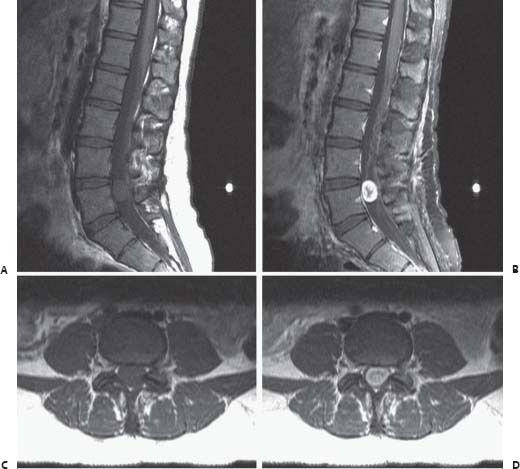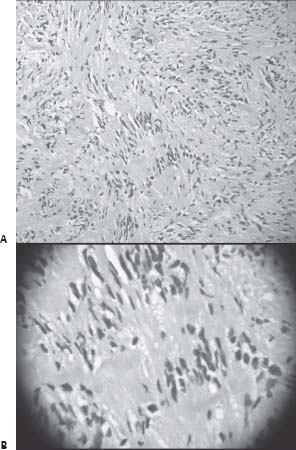Case 93 Intradural Spinal Tumor Fig. 93.1 Magnetic resonance images of the lumbar spine. (A) Sagittal T1-weighted image, (B) sagittal T1-weighted image with gadolinium, (C) axial T1-weighted image, (D) axial T1-weighted image with gadolinium through the lesion at L5.

 Clinical Presentation
Clinical Presentation
 Questions
Questions

 Answers
Answers
< div class='tao-gold-member'>
93 Intradural Spinal Tumor
Only gold members can continue reading. Log In or Register to continue

Full access? Get Clinical Tree


